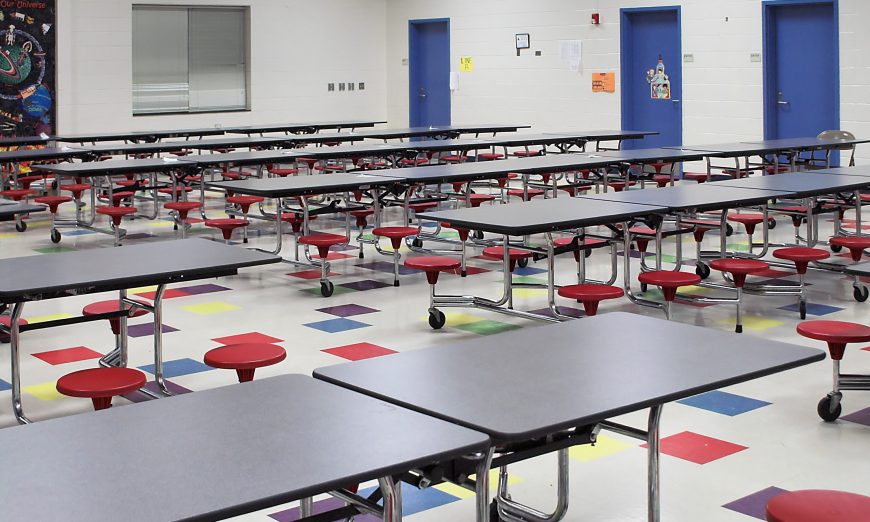The California Department of Education compiles statistics annually for all public schools in the state on a number of data points including how many students are experiencing homelessness or participating in the free or reduced lunch program. Among other uses, the data helps individual schools apply for grants to fund lunch assistance programs, which provide students whose families qualify, based on income, for free or reduced cost meals while at school. These programs are crucial to not only the overall wellbeing of students, but also to their ability to concentrate on studies and participate in activities.
Data from the 2017-18 school year reveals that of the 15,509 students enrolled in Santa Clara Unified School District (SCUSD) schools, 6,300 participated in the National School Lunch Program, 181 experienced homelessness and 156 were part of the Migrant Education Program, a federally funded program designed to help minimize disruptions for students due to repeated moves.
The same year, among Sunnyvale School District’s 6,575 students, 2,180 of them were in the lunch program, zero were reported to have experienced homelessness and zero were in the migrant program. Out of Fremont Unified School District’s 35,430 students, 6,520 received free or reduced cost lunches, 238 experienced homelessness and 70 participated in the migrant program.
At Santa Clara High School, there were 894 students receiving lunch assistance that year and 24 experiencing homelessness out of a student population of 2,033. Out of Fremont Union High School’s 2,123 students, 780 were in the lunch program and nine experienced homelessness.
“In Silicon Valley, there’s a significant economic disparity between those that have and those that don’t,” said Andrew Lucia, Assistant Superintendent, SCUSD. “Because of the rising cost of housing many families have moved out of the District to lower cost areas.”
Over the past 20 years, Lucia has seen a decrease in the number of students in the migrant program as well as the number of students who qualify for the free or reduced lunch program. In addition to the exodus out of the area, he attributes the decrease in lunch program participation to rising minimum wages locally. Because the lunch assistance is a federal program the standards aren’t set to take Silicon Valley’s high cost of living into account. A family of three can’t earn more than $38,000 in household income and still qualify, so some students in SCUSD schools who would benefit from the lunch assistance aren’t able to access it.
Although Lucia said that the number of students experiencing homelessness over the years has remained steady, he said that the true numbers are under-identified. He said the stable numbers are also attributed to an increase in “doubled-up” households in which two or more unrelated families reside together to share housing cost burdens.
In many cases, schools will learn about a student’s lack of permanent shelter due to a conversation the student has with a teacher or support staff. This can occur during a crisis situation in the student’s life when they decide to divulge that they’re residing in, for example, an RV or vehicle. The school staff will then notify the McKinney-Vento Liaison, who is the primary bridge between those without homes and the District. However, Lucia explained that oftentimes the initial conversation never occurs because parents sometimes instruct children not to speak about their unsheltered circumstances.
“Even if we had just one student who was experiencing homelessness, it’s a concern for us,” said Lucia. “We want people to feel comfortable communicating with school staff. The District is here to set students up for success by providing the resources we have to create the best learning environment.”
The framework of resources is set by the U. S. Department of Education’s McKinney–Vento Homeless Assistance Act. In addition to providing a liaison staff, the legislation ensures “that each child of a homeless individual and each homeless youth has equal access to the same free, appropriate public education, including a public preschool education, as provided to other children and youths.”
This equal access is delivered by provisions such as alternative proof of residency requirements and allowing students to remain at their current school even if the family moves out of the district, so as to help maintain a stable environment.
“Students experiencing homelessness have rights that cross boundaries,” Lucia stated.
Families are offered assistance with medical appointments for school immunizations. Other support provisions include bus passes, additional academic support and ensuring that field trips are accessible. Lucia said that local organizations help by donating backpacks, school supplies, clothing and shoes. The Lion’s Club donated glasses and funded vision screenings.
“We’re mindful of attendance issues and work to make sure that students are supported and coming to school,” said Lucia. “The homelessness liaison is there so students don’t slip through the cracks.”






